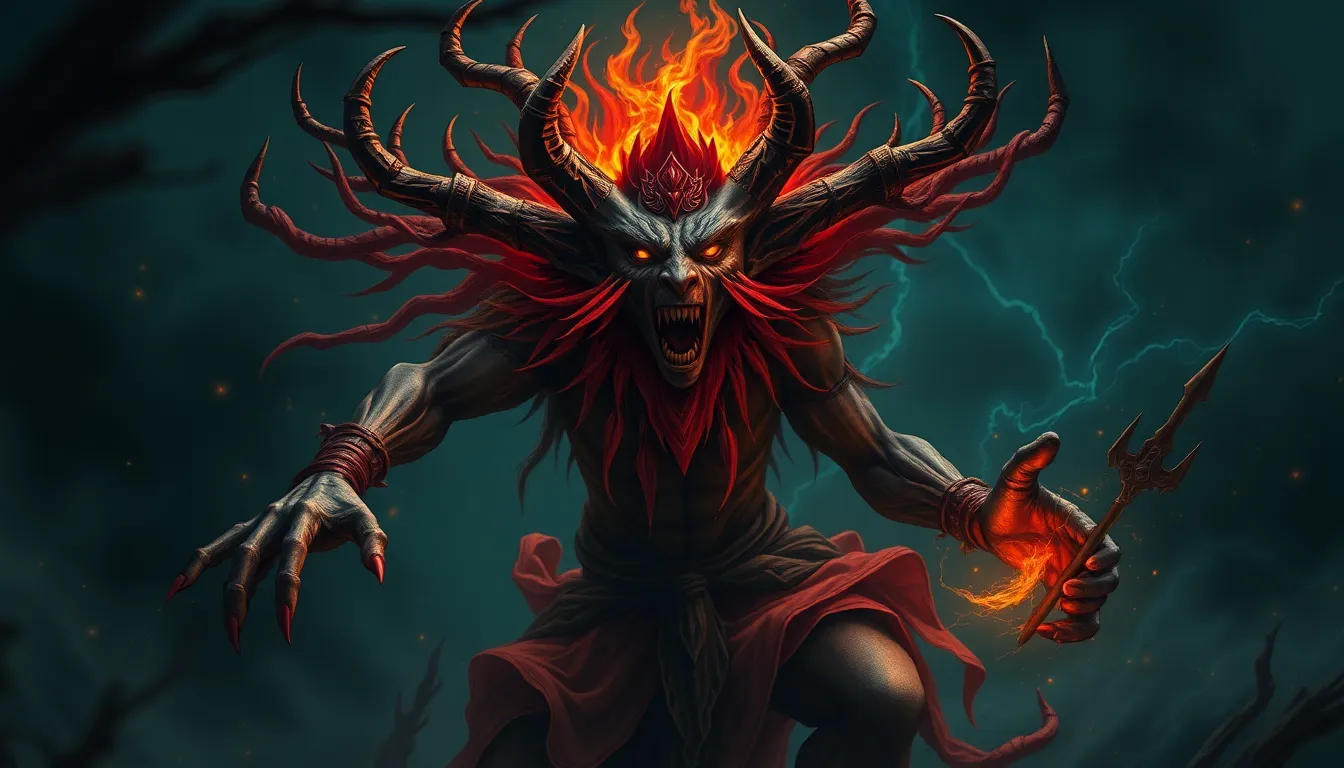Exploring the Myths of the Underworld: What Lies Beneath?
I. Introduction
The concept of the underworld has fascinated humans for centuries, manifesting in various forms across cultures and epochs. Defined broadly, the underworld represents a realm where souls go after death, a place filled with both fear and curiosity. Different cultures have their interpretations of this enigmatic space, often reflecting their beliefs, values, and fears regarding mortality.
Mythology plays a crucial role in understanding these beliefs, offering insights into how civilizations grapple with the mysteries of life and death. The underworld serves as a canvas onto which societies paint their hopes, fears, and moral frameworks, often using it to explain the unknown. This article aims to explore the multifaceted myths of the underworld across different cultures, delving into historical perspectives, specific mythologies, and the enduring significance of these narratives in contemporary society.
II. Historical Perspectives on the Underworld
Throughout history, ancient civilizations have developed intricate beliefs regarding the afterlife, often reflecting their societal norms and existential questions.
- Ancient Civilizations: From the Sumerians to the Aztecs, many cultures envisioned an afterlife, often associated with a journey that the soul must undertake.
- The Role of the Underworld: In Greek, Roman, and Egyptian mythologies, the underworld is not merely a place of punishment but also a realm of rest or rebirth.
- Comparative Analysis: While some cultures view the underworld as a place of torment, others see it as a continuation of life, reflecting their values and beliefs about morality.
III. The Underworld in Ancient Greek Mythology
In Greek mythology, the underworld is primarily known as Hades, named after its ruler. It is a complex realm where souls reside after death, categorized into different regions based on the lives they led.
- Key Figures:
- Charon: The ferryman who transports souls across the river Styx.
- Cerberus: The three-headed dog that guards the gates of the underworld.
- Persephone: The queen of the underworld, whose story symbolizes the cycle of life and death.
- The Journey of the Soul: Myths and rituals surrounding death often included offerings to ensure safe passage for the deceased.
IV. Egyptian Beliefs and the Afterlife
The ancient Egyptians had a rich and complex understanding of the afterlife, centered around the Duat, their version of the underworld.
- The Duat: A mysterious realm where souls faced judgment by Osiris and the weighing of the heart against the feather of Ma’at.
- Osiris: The god of the afterlife, representing resurrection and eternal life, embodying the Egyptians’ belief in rebirth.
- Funerary Practices: Elaborate burial rituals and tomb constructions aimed to ensure a safe journey to the afterlife, underscoring their beliefs in an eternal existence.
V. The Underworld in Norse Mythology
Norse mythology presents a distinctive view of the underworld, primarily represented by Hel and Valhalla.
- Hel: A realm ruled by the goddess Hel, where those who did not die a heroic death ended up.
- Valhalla: The hall of slain warriors, where those who died bravely in battle were welcomed, highlighting the Norse valorization of courage.
- Myths Surrounding Death: Norse myths often explore themes of fate, honor, and the inevitability of death, deeply influencing their cultural narrative.
VI. Underworld Myths in Asian Cultures
Asian cultures present a diverse array of underworld beliefs, with unique interpretations of the afterlife.
- Hindu and Buddhist Beliefs: Yama, the god of death, oversees the souls’ journey, emphasizing karma and rebirth.
- Chinese Mythologies: Diyu, the Chinese underworld, features multiple hells where souls are judged and reincarnated based on their earthly deeds.
- Comparative Analysis: Unlike many Western myths that focus on a singular underworld, Asian beliefs often incorporate cycles of reincarnation and moral balance.
VII. The Symbolism of the Underworld in Literature and Art
The underworld has long been a powerful symbol in literature and art, serving as a backdrop for exploring human experiences and emotions.
- Classic Literature: Works like Dante’s Inferno depict the underworld as a complex moral landscape, filled with allegories and lessons.
- Modern Storytelling: Underworld myths continue to influence contemporary narratives, appearing in films, novels, and video games.
- Artistic Representations: From ancient artifacts to modern art, the depiction of the underworld reflects humanity’s ongoing fascination with death and the afterlife.
VIII. Psychological Interpretations of Underworld Myths
Psychologically, the underworld can be seen as a reflection of the unconscious mind, revealing deeper fears and moral dilemmas.
- Reflection of the Unconscious: The underworld symbolizes the hidden aspects of the psyche, encompassing fears, desires, and unresolved conflicts.
- Archetypes: Figures from underworld myths serve as archetypes that help individuals navigate their understanding of morality, justice, and redemption.
- Modern Theories: Contemporary psychology explores how fears of death and the unknown shape human behavior and societal norms.
IX. Contemporary Relevance of Underworld Myths
The myths of the underworld remain relevant today, influencing spiritual practices and cultural expressions.
- Modern Spiritual Practices: Many contemporary spiritual movements draw upon ancient beliefs about the afterlife, seeking comfort and understanding in the face of mortality.
- Pop Culture: A resurgence of interest in the occult, horror genres, and underworld themes in media reflects humanity’s enduring curiosity about life, death, and what lies beyond.



